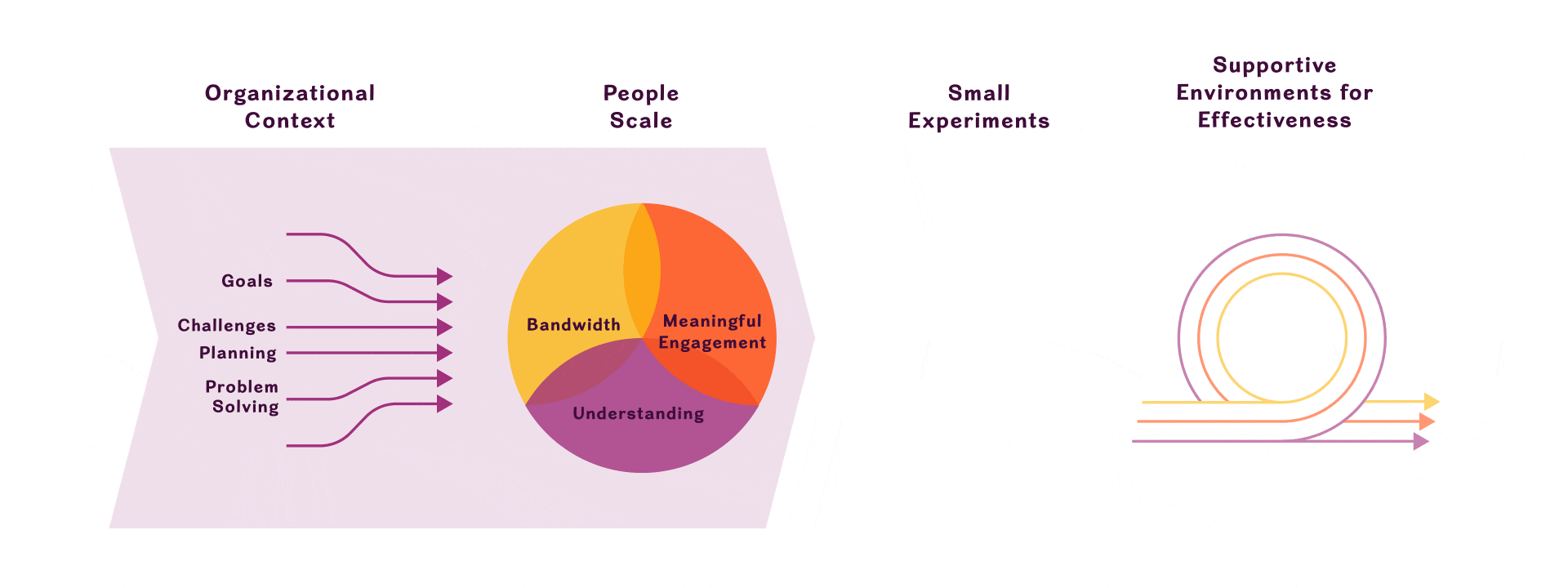The Role of Supportive Environments
We define “environment” to include not only physical settings, like the work space, but also social and virtual settings. Environments encompass the situations and circumstances where we interact with basic information; seeking it, making sense of it, and sharing it. When environments support people’s ability to interact with information, they feel less overwhelmed, and more motivated to collaborate, communicate, and contribute ideas.
Organizational Context
We recognize that nonprofits find themselves in multiple different contexts, or environments, that don’t always support their needs. They might be facing particular challenges, or have aspirations they are trying to build toward, such as refining their strategic plan.
People Scale
People have a variety of ways of navigating environments. For any environment, three key ways include forming an understanding through exploration, meaningfully participating in an effort to make a difference, and having the resources and mental clarity to feel competent when engaging with the information that makes up the environment.
Small Experiments
SEE encourages taking small steps, each an experiment, so that people, either individually or collectively, can adapt as they move forward. reDirect’s approach guides nonprofits as they reflect on where they’re at, what small actions they can take, and how they’ll gauge the impact of those actions.
Supportive Environments for Effectiveness (SEE)
When personnel build a SEE mindset, they work together to develop more supportive environments that meet the demands of the organization and its mission. SEE is a tool to learn from successes and failures to help nonprofits rethink the status quo.





